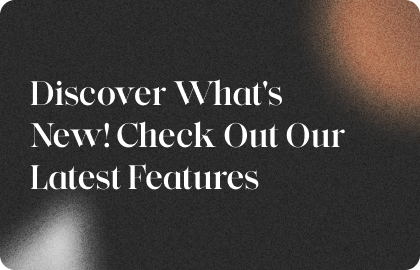In This Article
Subscribe to our newsletter
The Science of Video Engagement: What Actually Works

Creating engaging videos involves a deep understanding of what truly captivates viewers. It's about considering both the psychology of your audience and the technical aspects of video production. This delicate balance of art and science requires a strategic approach to not only attract viewers but also keep them coming back for more.
The Power of Short-Form Content
One of the most significant developments in video engagement is the rise of short-form content. These bite-sized videos deliver information quickly and efficiently. In our fast-paced world, where attention spans are dwindling, this concise format is more important than ever.
Platforms like Instagram and X (formerly Twitter) often favor incredibly short clips, sometimes under 15 seconds. This aligns perfectly with how users quickly scroll through their feeds, searching for captivating content.
TikTok, on the other hand, prioritizes slightly longer videos, typically between 15-60 seconds. This still falls within the realm of "snackable" content, allowing for a bit more depth while maintaining engagement. Even YouTube, which traditionally supports longer formats, is experiencing significant success with shorter videos. This highlights the importance of tailoring your video length to each specific platform.
A 2024 Sprout Social report emphasizes this trend, revealing that 81% of global consumers desire more short-form videos from brands. Want to dive deeper into these statistics? Discover more insights about short-form video statistics.
Optimizing for Different Platforms
To maximize engagement, understanding the nuances of each platform is essential. What thrives on TikTok might not perform as well on YouTube. This means adapting your video's length, style, and even its content to the platform you're targeting.
Despite these platform-specific differences, certain principles remain universally effective. The first few seconds of your video are absolutely paramount. This is your opportunity to hook viewers and entice them to continue watching. A compelling hook can range from a surprising visual to a thought-provoking question. The key is to immediately capture attention and spark curiosity.
To illustrate the varying optimal video lengths across different platforms, take a look at the table below:
To help understand how video length impacts engagement, let's look at a comparison across key platforms. The table below summarizes ideal video lengths and highlights important features for each platform.
Optimal Video Length by PlatformA comparison of ideal video lengths across major social media platforms based on engagement data
| Platform | Ideal Length | Engagement Rate | Key Features to Include |
|---|---|---|---|
| Instagram Reels | Under 15 seconds | High for short, attention-grabbing content | Music, trending audio, text overlays, fast-paced editing |
| X (formerly Twitter) | Under 15 Seconds | High for concise, impactful messages | Text overlays, strong visuals, clear call to action |
| TikTok | 15-60 seconds | High for dynamic, entertaining content | Trending sounds, creative effects, engaging storytelling |
| YouTube Shorts | Under 60 seconds | High for easily digestible content | Music, text overlays, quick cuts, clear call to action |
| YouTube (Long-form) | Variable, depending on content | Moderate, requires sustained interest | Strong narrative, high-quality visuals, clear audio |
As you can see, the optimal video length varies greatly depending on the platform. Understanding these differences is key to maximizing your video's reach and impact.
Utilizing Visual and Auditory Cues
Beyond length and platform, visual and auditory elements play a crucial role in engagement. High-quality visuals, dynamic editing, and clear audio are fundamental. Our brains process information through both sight and sound. By combining compelling visuals with engaging audio, you create a more immersive and memorable viewing experience. This approach makes it easier for viewers to process and retain the information presented.
Incorporating elements like music, sound effects, and even text overlays can significantly enhance the viewing experience. However, moderation is key. Overusing these elements can be distracting, pulling attention away from the core message. The goal is to use them strategically to enhance the storytelling and emotional impact. By understanding these principles, you can create videos that are not only visually appealing but also communicate effectively and resonate with your target audience.
Blending Education and Entertainment: The Perfect Formula

The most successful online videos aren't just visually appealing; they offer genuine value while keeping viewers entertained. This careful balance of education and entertainment is crucial for creating truly engaging content. It's about transforming information into an experience, making learning both enjoyable and something viewers will remember.
The Power of Value-Driven Content
One of the best ways to engage viewers is by providing them with real value. This could take the form of practical knowledge, helpful tips, or insightful information. Think of your videos as concise lessons or tutorials that empower your audience. This value-driven approach not only grabs attention but also builds appreciation and trust.
This strategy aligns perfectly with what viewers are looking for. How-to and educational videos consistently perform well, especially when designed for specific platforms. For example, short how-to videos under a minute retain viewers for 82% of their duration. Even longer educational videos (30-60 minutes) maintain a respectable 26% watch time. Find more detailed statistics here. This data highlights how valuable content keeps viewers interested.
Weaving in Storytelling Elements
While educational content is essential, making it entertaining is equally important. This is where the art of storytelling comes in. By incorporating narrative elements, you can transform complex information into captivating experiences. Structure your video like a journey, with a clear beginning, middle, and end. This keeps viewers invested and curious about what comes next. You might be interested in: How to master storytelling in video.
Instead of just listing facts, present information within a narrative. Use characters, conflicts, and resolutions to create drama and emotional depth. This not only makes information more memorable but also strengthens the connection with your audience.
Targeting Specific Audience Segments
Understanding your audience is another key aspect of creating engaging videos. Different demographics respond to different types of content. This means tailoring your approach to resonate with the specific group you're trying to reach. For instance, younger audiences might prefer fast-paced, visually dynamic content, while older viewers might appreciate a more measured, informative style.
Consider conducting audience research to understand their preferences. This data helps you make informed decisions about the tone, style, and subject matter of your videos. By understanding your audience's needs and interests, you can create videos that truly connect on a deeper level. This targeted approach maximizes engagement and ensures your message effectively resonates.
Technical Excellence: Production Elements That Matter

Even the most captivating content can fall short if the technical execution isn't up to par. Producing engaging videos requires meticulous attention to several key production elements. This extra effort elevates your videos from amateur productions to professional-grade content, signaling quality and establishing credibility with your viewers.
The Importance of High-Quality Audio and Visuals
High-quality audio and visuals are essential for a positive viewer experience. Imagine trying to savor a delicious meal through a fogged-up window. You might get a glimpse of the food, but the true enjoyment is lost. Similarly, subpar audio and visuals create a disconnect between your content and your audience.
Unclear audio can make it difficult for viewers to understand your message, leading to frustration and disengagement. Poor lighting or shaky footage can make your video appear unprofessional, diminishing its impact and perceived value.
Lighting, Audio, and Composition: The Trifecta
This means paying close attention to lighting, audio, and composition. Strategic lighting can dramatically enhance a scene, adding depth and visual interest. Clear, crisp audio ensures your message is communicated effectively. Investing in a quality microphone can significantly improve your audio quality.
Thoughtful composition, such as using the rule of thirds, can guide the viewer's eye and create a more aesthetically pleasing experience. For more insights into crafting compelling video content, explore resources like this guide on How to create video content for social media.
Optimizing for Accessibility and Mobile Consumption
Accessibility features, like closed captions, are crucial for maximizing reach and engagement. This is especially important given that 79% of US viewers primarily watch videos on their smartphones. Furthermore, 64% of TikTok users actively engage with content that features prominent captions.
With people globally watching an average of 17 hours of online video per week in 2023, the competition for attention is intense. Closed captions, along with platform-specific optimization, are essential for audience retention. Short-form videos under one minute boast a 50% average engagement rate, but their success depends heavily on accessibility.
Auto-captioned clips on platforms like Instagram and TikTok see higher completion rates, especially among the 17% of users who watch videos muted. Landing page videos paired with blog content achieve over 40% engagement rates, highlighting the importance of context. Learn more about these trends here. This mobile-first approach requires vertical formatting and compelling hooks within the first few seconds to truly grab attention.
Frame Rates, Resolution, and Editing Techniques
Technical aspects like frame rate and resolution also significantly impact video quality. Higher resolution delivers a sharper image, but you need to balance quality with file size for optimal mobile viewing. The right frame rate can influence the overall feel of your video.
A higher frame rate can create a smoother, more cinematic look, while a lower frame rate might be better suited for fast-paced action. Effective editing keeps the pace brisk, eliminates unnecessary content, and enhances the overall flow of your narrative. Attention to these technical details ensures professional-looking content and a smooth, enjoyable viewing experience.
Mastering Video Storytelling: Structures That Keep Viewers Hooked

The way you structure your video's story often determines whether someone watches it until the end. Understanding how to build your content for maximum engagement is crucial for creating videos that resonate with your audience. By looking at how viewers interact with videos and applying storytelling techniques, we can discover how to craft truly compelling narratives.
The Importance of a Strong Hook
The first few seconds of your video are essential for capturing attention. This is where the hook comes in. A strong hook might be a question that makes people think, a surprising image, or a short clip of something exciting. The goal is to immediately grab the viewer's curiosity and make them want to see what happens next.
For example, if your video is about cooking, showing a quick shot of the delicious finished dish can encourage viewers to stick around and learn the recipe. This initial spark of interest sets the stage for the rest of the video and can significantly impact its overall success. A strong hook builds anticipation and sets the tone for an engaging experience.
Building a Compelling Narrative Arc
After hooking your audience, you need to keep their interest. This is where a well-defined narrative arc is essential. Think of your video as a story with a beginning, middle, and end.
The beginning introduces the topic, the middle explores the details, and the end provides a conclusion or key takeaway. This structure gives your video a clear path, making it easier for viewers to follow along and stay engaged.
Just like a captivating book or film, a well-crafted narrative arc keeps the audience invested. This might involve introducing conflict, building suspense, and ultimately providing a satisfying resolution.
Calls to Action and Driving Engagement
Finally, a strong call to action is essential for turning viewers into active participants. This could be encouraging comments and shares or directing viewers to a website. A clear call to action gives viewers a sense of direction and purpose, making them more likely to take the next step.
This transforms passive viewers into active participants, strengthening their connection with your content. A well-defined call to action is essential for maximizing the impact of your video and achieving your goals.
Effective Video Storytelling Frameworks
To help you understand how different narrative structures can be applied, let's look at a few common frameworks. The following table outlines some effective frameworks and explains which video types they're best suited for.
Effective Video Storytelling Frameworks: A comparison of different narrative structures and their effectiveness for various video types.
| Framework | Best For | Example | Engagement Metrics |
|---|---|---|---|
| Problem/Solution | Tutorials, explainer videos | Showing a common problem and then demonstrating a solution | High completion rates, increased click-through rates |
| Story-Driven | Brand stories, testimonials | Sharing a personal story that connects with the audience | High share rates, increased brand affinity |
| Chronological | Event recaps, historical documentaries | Presenting information in a sequential order | Moderate engagement, good for information retention |
| "Listicle" Style | Top 10 videos, product comparisons | Presenting information as a numbered list | High click-through rates, good for showcasing multiple products |
By adapting these frameworks to your video content, you can create a more engaging experience for your audience. This strategic approach improves viewer retention and helps you reach your video marketing goals.
Platform Mastery: Custom Strategies for Maximum Impact
What works on YouTube might not work on TikTok. Creating engaging video content requires a deep understanding of each platform's unique characteristics and audience expectations. This is platform mastery. This section explores how to tailor your video strategies for maximum impact across different social media channels.
Understanding Platform Nuances
Each platform has its own technical specifications, content preferences, and audience demographics. Understanding these nuances is the first step toward creating effective video content. For example, short-form video reigns supreme on platforms like Instagram Reels and TikTok. These platforms often prioritize videos under 60 seconds. Even YouTube, known for longer content, has embraced short-form video with YouTube Shorts.
Beyond video length, audience behavior also varies. Instagram users tend to engage with visually driven content, while LinkedIn users often prefer professional and informative videos. Knowing your target audience is crucial. This allows you to create content that resonates with the specific platform they use.
Tailoring Your Content Strategy
Instead of creating separate videos for each platform, adapt your core content. A longer YouTube video can be repurposed into shorter clips for Instagram Reels and TikTok. This approach maximizes efficiency. You're not starting from scratch every time.
Repurposing also allows for experimentation. Test different formats and messaging to discover what resonates with each audience. This iterative approach helps refine your strategy over time. You can then optimize your content for each platform based on real engagement data.
Leveraging Platform-Specific Features
Every platform offers unique features that can boost engagement. Hashtags are essential for discoverability on Instagram and TikTok. Interactive features, like polls and Q&A sessions, can increase engagement on Instagram and YouTube.
Strategic use of these features is key. Relevant hashtags help your videos appear in search results, expanding your reach. Interactive elements foster a sense of community and encourage viewer participation. These tactics deepen the connection with your audience.
Streamlining Your Workflow
Managing a cross-platform content strategy can be complex. A streamlined workflow is essential. Tools like Aeon can help automate and simplify video creation. From text-to-video conversion to social media formatting, these tools save valuable time and resources.
A practical workflow involves creating a core piece of content and then adapting it for various platforms. Employ platform-specific editing techniques and features. Use a content calendar to schedule and track your video releases across all channels. This maintains consistency and helps build a loyal following.
Examples of Platform-Specific Strategies
Consider these examples:
YouTube: Create longer, in-depth videos. Use clear titles and descriptions optimized for search. Organize content into playlists to encourage viewers to watch more.
TikTok: Produce short, attention-grabbing videos using trending sounds and hashtags. Focus on visually driven storytelling and quick cuts.
Instagram: Utilize a mix of Reels, Stories, and longer-form videos. Incorporate interactive stickers and polls within your Stories.
LinkedIn: Share professional and informative videos relevant to your industry. Encourage discussion and networking in the comments section.
By understanding each platform's nuances and tailoring your approach, you create engaging videos that resonate with your target audience. This targeted strategy ensures that your videos reach the right people with the right message.
Beyond Views: Measuring and Improving Real Engagement
Creating engaging videos involves more than just tracking vanity metrics like view counts. It's about focusing on indicators that truly reflect audience interest. This requires a strategic approach to video analytics and a dedication to continuous improvement. By understanding what genuinely connects with your audience, you can craft content that fosters deeper relationships and drives meaningful results.
Metrics That Matter
While views offer a starting point, they don't paint the complete picture. Retention rate, measuring how long viewers stick with your video, provides crucial insight into which parts of your content captivate and where viewers drop off. This data helps pinpoint areas for improvement.
Engagement actions, such as likes, comments, shares, and click-through rates, offer a deeper understanding of viewer behavior. These actions signify active interest and demonstrate the effectiveness of your calls to action. This valuable feedback helps refine your content strategy.
Conversion indicators, like website visits or product purchases, gauge how well your videos are driving desired actions. These metrics link video engagement to tangible business outcomes. This is where showcasing return on investment becomes vital.
Implementing A/B Testing
A/B testing for video content means creating two slightly different video versions and comparing their performance. This lets you experiment with various elements like thumbnails, titles, introductions, or calls to action. Analyzing the results reveals which variations perform best with your audience.
For instance, you could test two thumbnails: a close-up of a person versus a bold graphic. Tracking click-through rates and watch time for each helps determine which visual is more effective. This data-driven method optimizes your videos for maximum impact.
Incorporating Viewer Feedback
Actively seeking and using viewer feedback is crucial for creating truly engaging videos. Encourage comments and questions, responding to foster community and build relationships. Polls and surveys can gather targeted feedback on content preferences.
Analyzing this feedback provides invaluable insights into what your audience values and where you can improve. Learn more in our article about 7 proven audience engagement techniques. This feedback loop allows continuous refinement and creates deeper connections.
Practical Workflows for Continuous Improvement
Establish a cycle of continuous improvement for your video content. Regularly analyze performance data, identify trends in viewer behavior, implement A/B testing to refine strategies, and integrate viewer feedback into your production process.
A structured approach to video analysis and improvement can steadily increase engagement across your content library. This ongoing optimization keeps content relevant and engaging, leading to stronger audience connections and better results.
Looking to improve video creation and boost engagement? Aeon, a video creation platform designed for publishers, offers a powerful solution. Aeon uses AI-driven technologies to automate and simplify video production, from text-to-video conversion to social media formatting. Discover how Aeon can help you create engaging videos that captivate your audience and drive results.







.jpg)